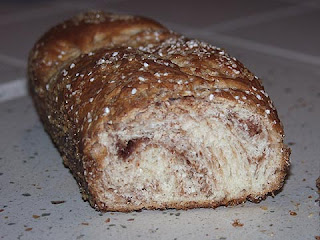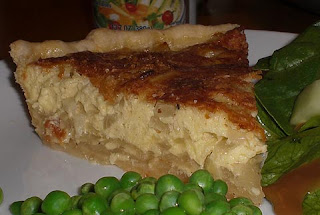A Taste of Home: Butter Tart Square
It wouldn't be Christmas in just about any Canadian home without butter tarts. Mince tarts can be a "take it or leave it" affair but butter tarts? They are the quintessential Canadian dessert and arguments have been fought over what makes the perfect butter tart.
Runny or firm, raisins or nuts...those questions fade into the background when asked the basic question of "Do you like butter tarts?" Everyone loves butter tarts.
Making butter tarts requires either far more patience than I possess or a source for frozen tart shells. Here in Sacramento, it can be a little difficult to find frozen tart shells. Over the past eight years, I've had intermittent success in finding tart shells at the Safeway on Greenback and San Juan and I've also seen some rather expensive ones at Corti Bros.
Faced with the scarcity of frozen tart shells, I was thrilled to see "butter tart squares" on the table at both of my sisters' homes during my recent trip home. Besides making the quest for frozen tart shells moot, the recipe for these dainties combines two of the best tastes of Christmas baking: butter tarts and shortbread.
Yesterday, they graced my table too.
Butter Tart Squares
(adapted from a recipe from Best of Bridge)
Base:
1 cup butter
2 cups flour
1/4 cup sugar
1/4 tsp. salt
Topping:
1 cup raisins
1 T. flour
3 eggs beaten
2 cups brown sugar
1 T. baking powder
1/2 T. vanilla
1/4 cup butter, melted
Preheat oven to 350.
Using a pastry cutter, combine butter with dry ingredients until the mixture is crumbly (it will look similar to pastry dough before the addition of any liquid). Press the mixture into an ungreased 9x13 pan. Set aside.
In a small bowl, combine raisins and flour. Mix well so that no raisins are still clumped together. Set aside.
In a medium bowl, mix eggs, brown sugar, baking powder, and vanilla. Slowly add melted butter. Add in raisins and stir well.
Pour topping mixture over shortbread base and bake for 35 minutes.Allow to cool completely before cutting.













